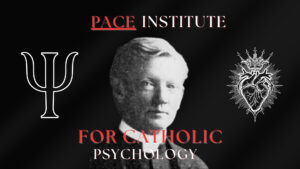Marist Hall, a History

Image Courtesy of Wikimedia
By Noah Slayter
This is an independently submitted op-ed for our Quill section. Views and statements made in this article do not necessarily reflect the opinions of The Tower.
Marist Hall is the building we’ve never been inside of. Everyday, students walk underneath its overbearing shadow on their way to O’Boyle. In 2011, an earthquake condemned the property to its dilapidated solitude. Here is a brief history of the building and its occupiers.
Dedicated in 1900, Marist was home to the Fathers of the Society of Mary (Marist Fathers), a religious order of men started in Lyons, France, in 1816. According to a document by Nicholas Weber called The History of The Marist Houses of Formation In America, the Marists “play a role in [the] family of Mary comparable to that of St. Joseph in the Holy Family… The brother serves Mary as a valuable helper in schools, seminaries, parishes or as a volunteer in foreign missions.”
The Fall of Napoleon, the Bourbon Monarchy’s re-establishment, and subsequent religious persecution caused many Marist fathers to leave the country. Eventually, offshoot groups were created in America. One group moved to Maryland and later Washington, DC. This group would establish a college next to the burgeoning Catholic University of America (CUA) called Marist College. Based on Weber’s text document from 1960, there are 51 Marist groups in the US and Canada.
In 1891, the Marists purchased “Brooks Mansion,” which is across the street from current CUA property. But the historic building proved to be too small for their purposes, so they bought a 10 acre plot of land for $28,255 in the similarly named Brookland. The establishment they built became “Marist Hall,” a school for “the training of young men in theology, philosophy, canonical law and history, preparatory to their ordination into the Roman Catholic priesthood, and for the purpose of forming them for missionary work in home and foreign missions,” according to the Weber text. The college officially opened in 1892.
The school was completely self-contained, holding all their dorms, classrooms, dining rooms, and laundry. The school never had more than 175 clerical students at once, according to A History of Marist College by M. J. McMahon in 1939. McMahon said of the architecture of the building, “Marist College has little reason to boast. But then lofty pinnacles and artistic facades never constituted the pride and glory of any seminary.” The students studied a six-year course of philosophy and theology, “two years being devoted to the former and four to the latter.” Marist College, needing further space, built the Marist Annex in 1931.
The brothers were notable for their missionary work in Oceania. During Easter in 1935, an Exhibition of the missionary work was sponsored by Catholic University. Marist College asked its alumni to send them artifacts of their ministry. McMahon writes that their “artist booth more than held its own.” They had many “valuable objects, illustrative of the customs and idiosyncrasies of the Polynesian and Melanesain tribes of Oceania, are now housed in Marist College forming a most interesting mission-museum attractive to many visitors.”
In the mid-1970’s, the building transferred possession to CUA, based on a National Register of Historic Places (NRHP) registration form for Marist, “The agreement stipulated that the statue of the Blessed Virgin Mary, located in the cupola atop the center gable of the building, would be returned to the Marists, along with the contents of the cornerstone, should the building ever be demolished by CUA.”
Marist was one of many CUA buildings hit by a serial vandal. The other buildings were Spellman and Magner (both of which no longer exist). A tower article from April 16, 2004 mentions how “A group of students entered Spellman and Magner residence halls and began a spree of vandalism.” The article speaks of how unlocked dorm rooms were entered (even with sleeping students), property was stolen, contents of a fire extinguisher and shaving cream was “discharged” on floors and hallways. Marist specifically had a computer stolen from their media studies classroom on April 1 of that year. Most egregious of the vandalism was a Swastika drawn on a door in Spellman.
In August 2011, a 5.8 magnitude earthquake hit the East Coast centered in Virginia, causing unknown structural damage to Marist. From the NRHP form, “While two stone chimneys on nearby McMahon Hall were dislodged and had to be removed, there was no immediate indication of damage at Marist Hall.” Classes continued until it was reported that “sustained cracks and movement” were found in the building. Repairs were made and the building was reopened in 2013. However, in 2016 the cracks became significantly visible again (after initial repairs failed), and the building was closed permanently in 2017. The offices that used to exist in Marist and were subsequently moved were the Anthropology, English, Politics, Media Studies, Library/Information sciences, and University Development departments.
Currently Marist remains an abandoned edifice of the North Campus, questions remain as to the legality of demolishing the building which depends on its possible status as a building on the National Registry of Historic Places.






